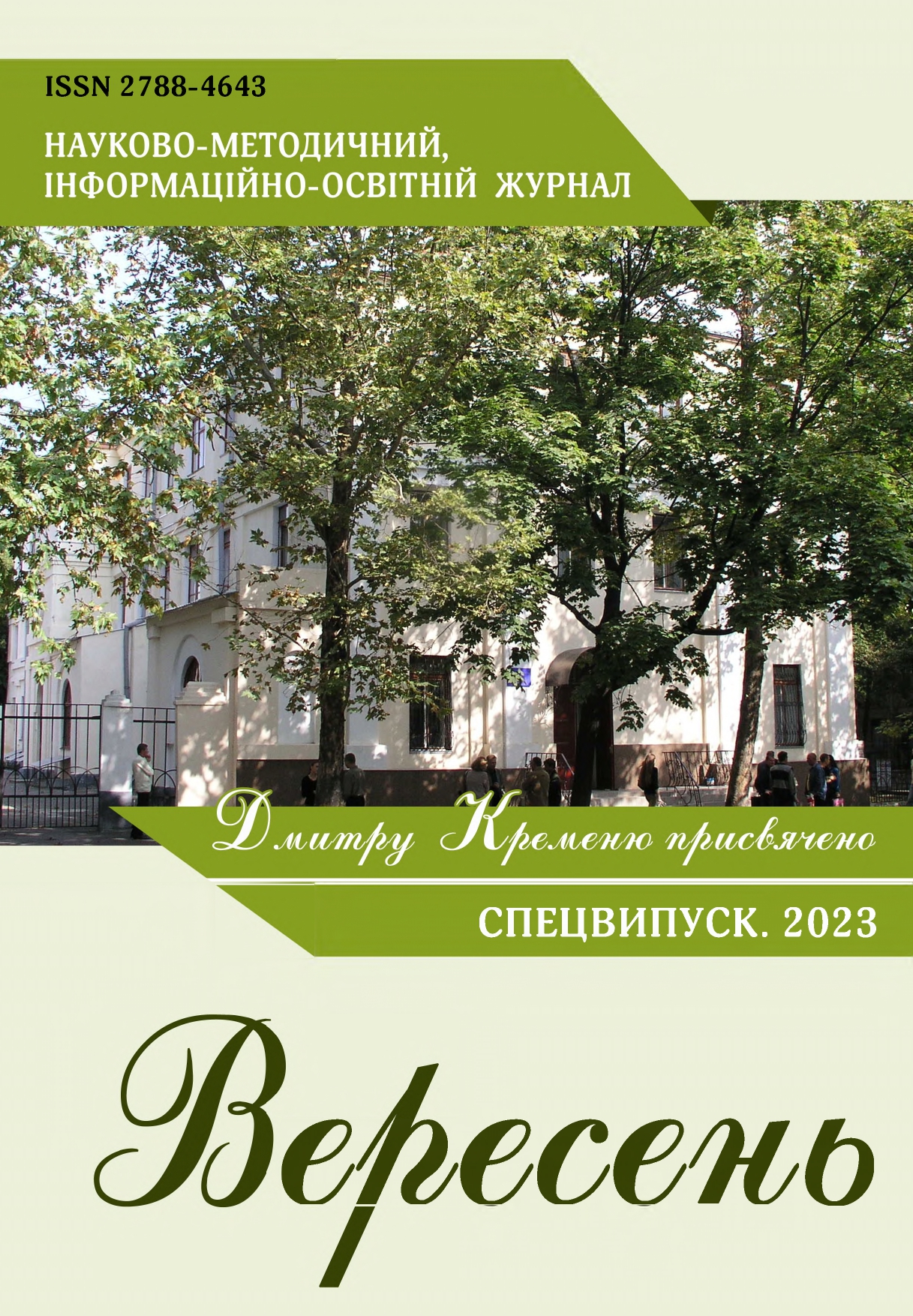HISTORIOSOPHICAL INVECTIVES AND LYRICAL SELF-INVERSION IN THE BOOK «DANCE OF FIRE» BY DMYTRO KREMIN
DOI:
https://doi.org/10.54662/veresen.2023.04Keywords:
invective, metaphysics, non-conformism, bifurcation, self-immersion, space-time, «stürmerism»Abstract
This article analyzes the third poetry collection by D. Kremin, titled «Dance of Fire» (1983). This collection follows «May Arch» (1978) and «Northern Lights» (1982), as well as the student manuscript «Dance of Wandering Fire» (1974), which was banned from publication and seized during a dormitory search. «Dance of Fire» recreates the paths of the author's creative exploration, moving from experimentation, non-conformism, «stürmerism», and modernist preferences, presented in innovative symphony poems and mysteries, to classical poetic forms. These new forms reveal an intellectual horizon and semantic power. The collection explores the Carpathian-Black Sea mythospace, a pagan-Christian worldview, the concept of displacement in historiosophical understanding, meditative writing, suggestive orientation, noticeable hermeticism, biblical motifs, and modern visions of life. From an external perspective, one can perceive the creative explosiveness of a student from Transcarpathia and the restraint of a journalist from Mykolaiv, which demonstrate the mythospace of various writers. Although Cossack motifs do not dominate the «Fire Dance» collection, they are pervasive throughout.
The epicness, multifacetedness, and folklore reproduced in «The Ballad of the Night Flight» do not simply modernize right-wing themes associated with past eras, nor do they aim to artistically reconstruct the medieval era. Instead, through the concept of the road, along which the lyrical hero travels with his companion, the collection reveals glimpses of traditional plots from heroic epics, blurring time boundaries. The creative alter ego portrayed in the subsequent poetic collections is closed off from the world, characterized by an obvious «incomprehensibility», conveyed through artistic means such as «quiet» lyrics, metaphorical poets, and Kremin's unique idiostyle.
References
Dziuba, I. (2008). Dmytro Kremin: rozmova z doboiu na kraiu prirvy [Dmytro Kremin: a conversation with a day on the edge of the abyss]. In D. D. Kremin. Skifske zoloto: vybrani virshi ta symfonii. Mykolaiv: Ilion, 3–14 (ukr).
Kovaliv, Yu. (2003). Litopysna istoriosofiia Dmytra Kremenia [Chronicle historiosophy of Dmytro Kremen]. In D. Kremin Litopys: vybrane. Mykolaiv: Mozhlyvosti Kimmerii, 5–16 (ukr).
Kremin, D. (1983). Tanok vohniu: poezii [Fire dance: poems]. Odesa: Maiak (ukr).
Kremin, D. (2021). Z dniv shalenykh: Knyha rannoi liryky ta virshiv «zakarpatskoho tsyklu» [From the days of the crazy: Book of early lyrics and poems of the «Transcarpathian cycle»]. Mykolaiv: Ilion (ukr).
Kuznietsova, A. & Hladyshev, V. (2021). Vazhlyvyi etap naukovoho osmyslennia poetychnoi spadshchyny ta zhyttia Dmytra Kremenia [An important stage of the scientific understanding of the poetic heritage and life of Dmytro Kremen]. Veresen. T. 3, 3 (90), 90–102. Doi.org/10.54662/veresen.3.2021.08 (ukr).




